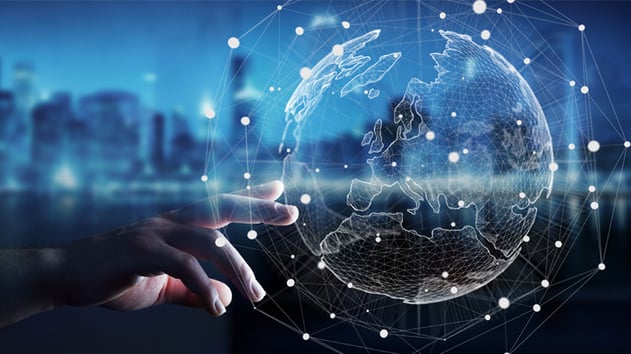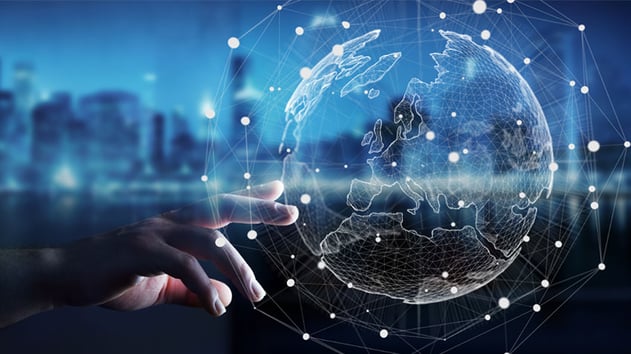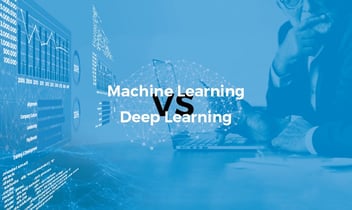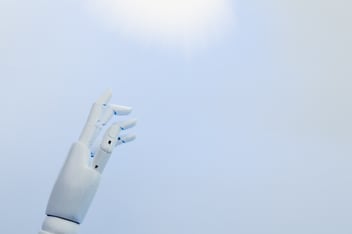We take a look at the 7 most common deep learning applications and softwares and give some examples of what it is used for in business.
Deep learning is increasingly making its way into the business world. Some even claim it has overtaken machine learning, but what is it being used for? We explore the use of deep learning in business and name 7 of the most used deep learning tools and softwares by companies.

In recent years, deep learning, machine learning and artificial intelligence (AI) are having a major impact on the business world. Like machine learning, deep learning is based on algorithms derived from neural connections that mimic the way the human brain functions. Although both are forms of artificial intelligence (AI), machine learning and deep learning have certain differences, as we explained in 'What Is the Difference Between Machine Learning and Deep Learning?'.
However, many companies still do not understand what deep learning is and how can they use it to optimise business processes and operations.
Deep learning: examples and use cases
In business, deep learning has a wide variety of applications and use cases that change according to the needs of each industry. Some of the most common examples of deep learning uses in business are:
- Image and video recognition: Deep learning algorithms have significantly improved the quality and accuracy of detection algorithms used for text, objects, and logo and landmark detection. Deep learning-based computer vision algorithms have improved the accuracy of face recognition, visual search and reverse image search.
- Speech recognition: Also known as speech-to-text (STT) or automatic speech recognition (ASR), this technology transforms spoken words into text. ASR is used in many industries, including healthcare and automotive.
- Manufacturing: Deep learning algorithms provide increased accuracy for industrial systems and devices. For example, the technology can be used to automatically send alerts about production issues, power industrial robots and sensors, and analyze complex processes.
- Entertainment: Deep learning algorithms power a wide range of entertainment systems, including the personalization of content, streaming, and adding sound to silent movies.
- Retail and ecommerce: Applications include voice-enable shopping powered by deep learning algorithms, in-store robots, future trend predictions, and personalized recommendations.
- Venta al por menor y e-commerce: Some e-commerce applications already use deep learning to improve their shopping and customer experience with voice-enabled shopping. In addition, intelligent in-store robots, predictions of future trends and personalised recommendations are also common use cases for deep learning in retail.
- Healthcare: Deep learning is being used for computer-aided disease detection and diagnosis, sometimes providing superior performance compared to human experts. Additionally, deep learning algorithms help improve medical research and drug discovery..
Top 6 deep learning applications and softwares in business
Despite its numerous business advantages such as process automation or predictive analysis, deep learning requires professional profiles and highly specialised tools. Some of the most used in business are:
1. Microsoft Cognitive Toolkit (CNTK)
CNTK is a Microsoft open source toolkit designed especially for commercial-grade distributed deep learning. CNTK uses a directed graph to describe neural networks as a series of computational steps. The toolkit lets you easily combine popular models like convolutional neural networks (CNNs), recurrent neural networks (RNNs/LSTMs), and feed-forward DNNs.
You can include CNTK as a library in your C++, C#, or Python programs. You can also use the toolkit as a standalone machine learning tool via the framework’s a model description language, called BrainScript. The CNTK also provides model evaluation functionality, which you leverage directly in Java programs.
2. TensorFlow
TensforFlow is an open source framework developed by Google researchers for developing and running machine learning and deep learning algorithms. It is used by data scientists, statisticians and predictive modelers. TensorFlow is a powerful but complex platform with a steep learning curve.
TensorFlow builds processes using the concept of a computational graph. Edges connecting nodes in a graph can be expressed as multidimensional vectors or matrices - these are known as tensors. The data flow architecture used by TensorFlow is particularly suitable for very large parallel processing applications, especially neural networks.
TensorFlow applications can run on traditional CPUs, high-performance graphics processing units (GPUs), or Tensor Processing Units (TPUs). These are custom processors developed by Google and offered on the Google Cloud Platform, which are specifically designed to accelerate TensorFlow operations.
3. PyTorch
PyTorch is an open source deep and machine learning framework based on Python's programming language and Torch library. It was designed to reduce the time required by data scientists and developers to go from research prototyping of a machine learning algorithm to deployment. Compared to TensorFlow, PyTorch is considered much easier to learn and use.
PyTorch supports distributed training, letting you run large-scale models across multiple CPUs, GPUs, and physical machines. It lets you export models using the Open Neural Network Exchange (ONNX) format, making it easier to share models with others and reuse models created by others. It has strong support for public cloud platforms, letting you easily run models in production on providers like Amazon, Azure, and Google Cloud.
4. Cloudinary Video AI API
An illustrative example of a deep learning solution that does not require data science expertise is the Cloudinary video AI API. The API can be embedded into any web application, and enables AI-managed processing and management of video content, including real time video streams.
Cloudinary’s video artificial intelligence can automatically transcode videos to the most appropriate format, automatically detecting quality settings that will achieve the highest quality with lowest bandwidth, with no manual tuning. It performs content-aware compression, which compresses each frame of the video individually by automatically adjusting quality and applying different compression methods to different types of video content.
Cloudinary also uses deep learning to detect objects in video content, and makes it possible to automatically adjust video to different sizes, while maintaining focus on the most interesting element in the video frame. It can also automatically detect video content and create captions.
Deep learning: Software and hardware
Deep learning algorithms are very computationally intensive. Large scale deep learning models would take a very long time to run on traditional CPU-based hardware. There are three special types of hardware being used to accelerate deep learning models, enabling faster and more effective experimentation:
5. Graphical Processing Units (GPU)
GPUs are built of a large number of processing cores that run in parallel. They specialize in running multiple computations simultaneously, which can be extremely efficient for deep learning algorithms. GPUs also provide substantially higher memory bandwidth, commonly 10 to 15 times more than regular CPUs.
6. Field Programmable Gate Arrays (FPGAs)
FPGAs are integrated circuits where the internal circuitry is not status. It can be reprogrammed according to the task at hand. FPGAs are a compelling alternative to ASICs, which require a long development and fabrication process. FPGAs can provide better performance than GPUs, just like a purpose-built ASIC performs better than a general purpose processor.
7. High Performance Computing (HPC)
HPC systems are highly distributed computing environments, which use thousands of machines to achieve massive processing power. HPC systems require a high density of components, with special energy and cooling requirements. Deep learning algorithms that require high computing power can leverage HPC hardware, or HPC services offered by cloud providers like AWS and Azure.
Deep learning is already impacting our lives and it has incredible potential to push us even further into the future.
However, these innovations could not happen without the tools and infrastructure that make deep learning applications easy to develop and maintain.
Exclusively written for bismart.com. Prepared by Eddie Segal | Eddie Segal is a an electronics engineer with a Master’s Degree from Be’er Sheva University, a big data and web analytics specialist, and a technology writer. He covers subjects ranging from cloud computing or agile development to cybersecurity and deep learning.



